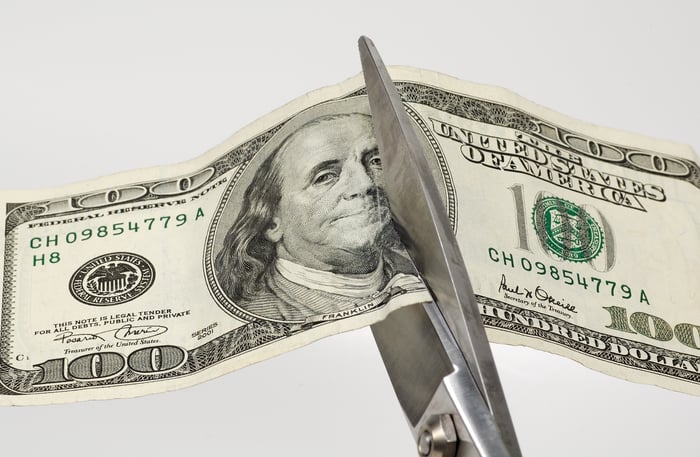The average consumer probably comes across offers regularly that would best be described as "too good to be true." There is a variation of this truism that applies to dividend investors shopping for new stocks. Some dividends they encounter are best described as "too good to last."
Recently, dividend investors were informed that CVR Partners (UAN 0.16%) now offers a huge 38% distribution yield. While the yield is in fact real, it is still too good to last if you take the time to understand what's going on.
The numbers involved with CVR Partners
Dividend yield is a simple math equation that takes a company's annual dividends per share and divides them by the stock price. The one caveat here is that the dividend is often annualized using the most recent quarter, which helps account for dividend increases that may have just taken place. Thus the equation is often the current quarterly dividend multiplied by four. In the case of CVR Partners, the most recent quarterly distribution was $10.43 per unit. Divide that by the unit price, which is around $85, and you get 49%.

Image source: Getty Images.
A more conservative way to calculate yield is to look at the last four quarterly payments. For CVR Partners, the sum of the last four distributions is $32.75. That's the math that you'll find on some online stock quote providers. The yield, in this case, is a more conservative, but still astronomically high, 38%.
Both of these percentages should cause investors to hit the pause button. A yield of 10% or more normally signifies that there are risks to the dividend. At the very least, a yield that high or higher should lead to a very deep dive into a company's business to make sure that the payment is sustainable. It is highly unlikely that CVR Partners' 38% yield (or 49%, depending on how you calculate it) is sustainable.
CVR Partners has its ups and downs
CVR Partners' distribution policy is the first warning sign: "It is currently the policy of the Board of Directors of the general partner of CVR Partners to distribute all of the available cash we generate each quarter, as determined by the Board of Directors." From a plain-English standpoint, that says the dividend is variable and tied to performance. It is designed to go up and down over time.
Adding to the variability here is that fertilizer sales are seasonal. When farmers are using fertilizer, demand and sales will be strong. But when the growing season ends, demand falls off. That can be seen over the past year, with the distribution payment in the fourth quarter of 2022 a mere $1.77 per unit. The other three distributions over the past year were all above $10 per unit. If you bought CVR in the hope of living off the income it generated, the drop of over $8 per unit in that one quarter could cause a real problem.
UAN Dividend Per Share (Quarterly) data by YCharts.
Perhaps most important, however, is that fertilizer is a commodity. That means supply and demand play a huge role in how much CVR Partners can charge for the products it sells. If demand is high, it can reap massive profits because of high prices. If demand is low, however, prices and profits will likely fall pretty hard. Those types of swings are fairly typical for commodity businesses.
To put some numbers on this, before the distribution jumped up to $10.05 per share in the third quarter of 2022, it was just $2.26. The three quarters prior to that came in at $5.24, $2.93, and $1.72. It's not that those are good or bad numbers, but they are clearly much lower than the current distribution.
Not for everyone
CVR Partners' huge distribution yield is neither an illusion nor a mistake. But it is most certainly not a figure you can expect to last over the long term. The variable policy married up with a seasonal commodity business ensures that. If you are a dividend investor looking to live off of the income your portfolio generates, you'll want to tread with extreme caution here.






